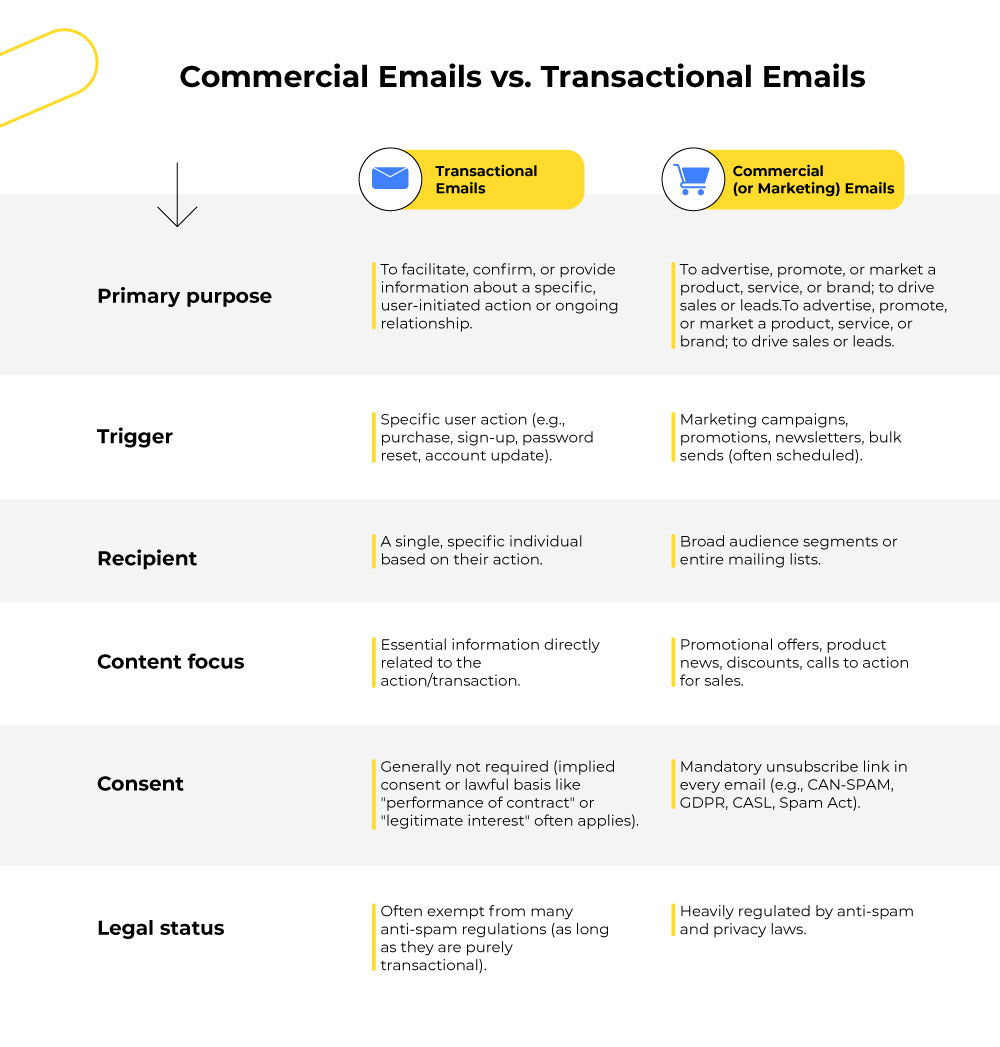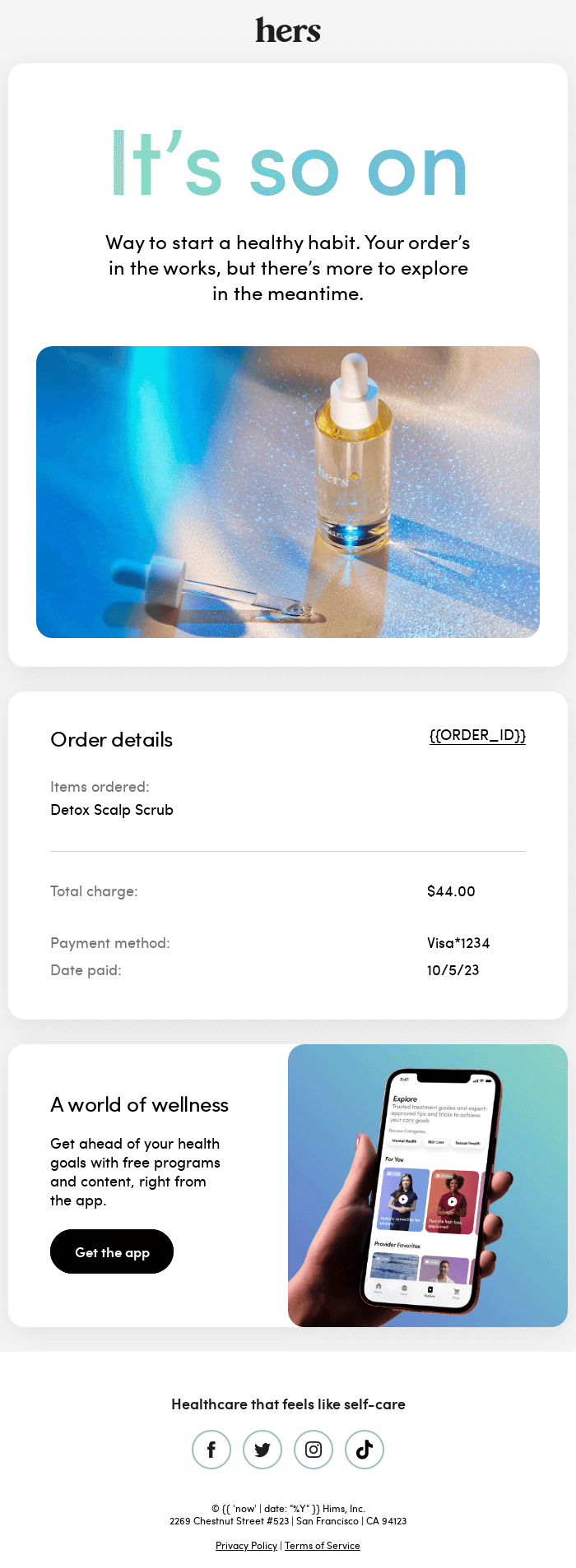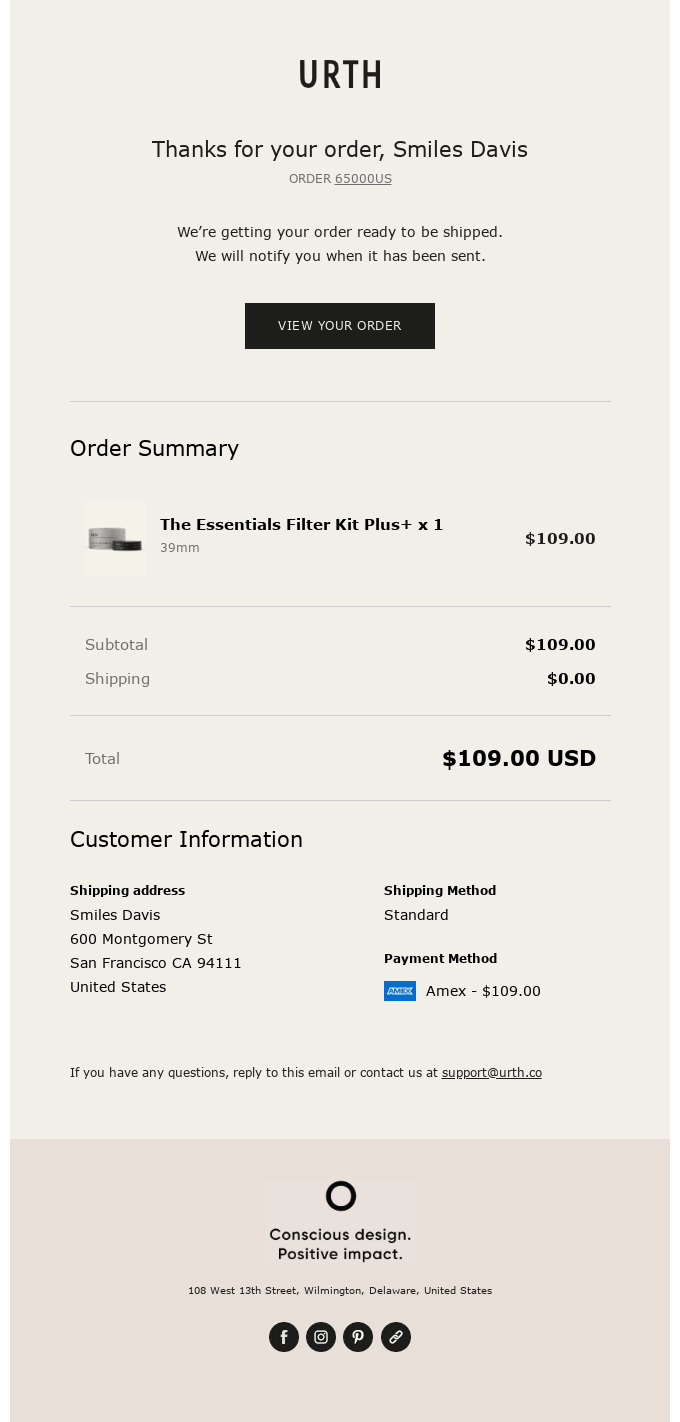Objectively, it isn’t necessarily hard to tell a commercial email from a transactional one. The real confusion kicks in when you factor in the different regional laws that govern email marketing.
Because email is such a direct, personal channel, every send carries the weight of doing it right—whether that means respecting local regulations or keeping each message relevant.
That’s why you need absolute clarity before hitting “send.” If you’ve ever found yourself second-guessing what counts as commercial or transactional, you’re not the only one.
Over the last 12+ years at Email Mavlers, this confusion has led us to redesign emails altogether for many clients.
Let’s put the guessing to rest, once for all, starting now.
What Is A Commercial Email?
Any promotional email is a commercial email. Welcome emails, flash sales, newsletters, product launches, etc. are commercial. You can check out some prime examples of commercial email design here.
In short, any email you send to promote your goods or services.
Let’s look at how different countries define commercial emails.
1. Australia: Spam Act (2003)
A commercial electronic message is defined as an electronic message where, considering the content, presentation, and any links or contact information provided, it would be concluded that the purpose—or one of the purposes—of the message is to:
- Offer to supply goods, services, land, or an interest in land
- Advertise or promote goods, services, land, or a supplier/prospective supplier
- Offer or advertise business or investment opportunities
- Promote a provider or prospective provider of business or investment opportunities.
2. United States (CAN-SPAM Act)
Any electronic mail message the primary purpose of which is the commercial advertisement or promotion of a commercial product or service (including content on an Internet website operated for a commercial purpose).
3. CASL (Canada’s Anti-Spam Legislation)
An electronic message that, having regard to its content, or its links, or the contact information provided, would reasonably be determined to have as a purpose encouraging participation in a commercial activity.
For a comprehensive list of email marketing laws, you can refer to this detailed breakdown by WPFunnels.
What Is A Transactional Email?
A “transactional email” is an automated, one-to-one email sent to a single recipient in response to a specific action they have taken on a website, application, or with a service. These include:
- Order confirmation and receipts
- Shipping and delivery notifications
- Account creation/registration notifications
- Subscription confirmations
- Password rest emails
- Customer service replies
- Billing notifications/invoices
Strong transactional email design ensures these messages deliver essential information clearly and reliably.
Now, when it comes to how various regions interpret transactional emails, things get a bit complicated. For instance, according to CAN-SPAM, if an email contains both commercial and transactional content, its “primary purpose” determines if it’s subject to CAN-SPAM’s rules. So, if the subject line would lead a recipient to believe it’s commercial, or if the transactional content isn’t primarily at the beginning, it can be deemed commercial.
On the other hand, CASL is very strict about mixing commercial and transactional content. While transactional messages may not require consent, if they include any reference to personal or product promotion, they can be classified as a CEM and require consent. Therefore, it’s recommended to send purely transactional emails separately from any promotional follow-ups.
For inspiration, we’ll take a look at transactional email examples from a few brands shortly.
What Is the Difference?
When we talk about emails, it’s very easy to lump them all into one category, but legally and functionally, not all emails are created equal. The distinction between transactional emails and commercial (or marketing) emails is crucial, especially when navigating the complex landscape of email marketing laws and ensuring that you’re communicating effectively and compliantly.
So, here’s a breakdown of the key differences between these two types of email.

Misclassifying an email can lead to severe penalties, including hefty fines, damage to sender reputation, and a loss of trust with your audience. By adhering to the distinct purposes and requirements for each type of email – prioritizing essential information and clarity for transactional messages, and obtaining explicit consent for all commercial communications – you can ensure that you remain on the right side of the law.
So, keeping these in mind, let’s find out how you can optimize your transactional emails.
Optimizing Transactional Emails
Even though transactional emails don’t require consent, it doesn’t give you the right to add more promotional content. You need to strike a balance between the forms of content.
Here are some best practices for transactional email design that respect both your customers and the law:
1. Apply the 80-20 Rule
Leverage the transactional email’s core purpose to deliver a clear, concise, and valuable message, while subtly enhancing the customer experience without overwhelming them with overt promotions. Apply the 80-20 rule; only 20% of your transactional email should include promotional content.
Take a cue from this order confirmation email by Hims.
80% of the email is about the placed order. Toward the end of the email, Hims dedicates a small section to their app.
2. Maintain Your Brand Identity
If you think it’s fine to keep your transactional emails minimal, or skip the design altogether, make sure they still reflect your brand.
And if you’re legally restricted from adding promotional content, like with Canadian recipients, that’s even more reason to double down on branding. Design these emails keeping commercial email design principles in mind.
Because at the end of the day, it’s also about staying authentic. For example, Urth keeps it on-brand yet non-promotional.
This email shows how minimalist design can enhance functionality while maintaining brand personality through restraint.
3. Request for Buyer’s Consent
Include a request in your transactional emails asking the recipient if they’d like to receive future emails from you. This is a great opportunity to invite them to opt in to your marketing list. For an example, check out this email from Nordstrom.
Note the footer where Nordstrom requests the recipient to add the email address to their address book.
4. Consider Welcome Messages
You can also incorporate a warm welcome message within your transactional emails—especially when it’s a customer’s first purchase or interaction with your brand. While the primary purpose of a transactional email is to confirm an action (like a purchase or account creation), including a short, friendly welcome note helps build rapport and set the tone for your relationship moving forward.
Something as simple as “Thanks for joining us—we’re excited to have you!” can go a long way in humanizing your brand, even within a functional message. Just be sure the welcome stays secondary to the transactional content to remain compliant with regulations.
For example, here’s how Ipsy does it below.
The welcome message here is woven in naturally—they’re not just confirming your starter kit purchase, they’re welcoming you to some kind of exclusive club.
The whole vibe is very “welcome to the family” mixed with “your order is on the way” – so you get the practical info you need but wrapped up in this bubbly, community-focused messaging that makes you feel like you just became part of something bigger than a simple product purchase.
These transactional email examples show how brands can elevate essential messages without breaking the rules.
Wrapping Up
The difference between commercial and transactional emails isn’t just a legal nuance, it’s foundational to how you build trust, stay compliant, and communicate with clarity.
As you craft your email strategy, remember: every message should feel intentional, aligned with your brand, and compliant with the rules that govern your audience’s inboxes.
Need help designing beautiful compliant emails for your business? Get in touch with our email design and dev team!








